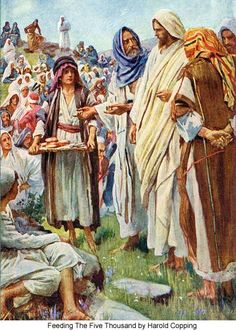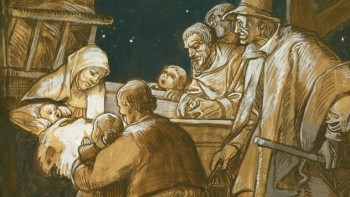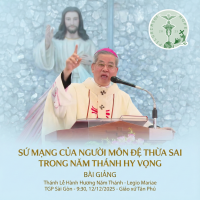Kính chuyển Linh mục giáo sư Peter Phan đình Cho đã bị giáo hội Công giáo La Mã tại Vatican "điều tra" vì "thiếu lập trường tôn giáo" và Vatican đã treo chén linh mục Cho và cấm giáo dân đọc sách ông ta viết... Điều chi đã khiến Vatican và giáo hoàng Biển Đức (một giáo hoàng mà tôi tôn trọng vì kiến thức uyên thâm về thần học) đã kết án linh mục PĐC: 1- PĐC đã đem cuộc cứu độ của đức Phật sau khi giác ngộ để "so sánh" với con đường "cứu chuộc của đức Jesus bằng máu của mình" (dùng máu để thanh tẩy tội tổ tông của con người là cong trình biện thuyết của st. Paul hơn là của 4 thánh gồm Mathew-Mark-John-Luke làm cột trụ của Tân Ước). 2- PĐC đã có khuynh hướng tạo ra công giáo Á Đông với sự kết hợp với nền văn hóa niềm tin của người Á Đông, khiến Vatican sợ hãi 3- PĐC đã thiết lập một lý thuyết thần học không biên giới... Toàn là "tội lớn" với giáo hội Vatican nên Vatican và cộng đồng giám mục HK đã triệt hạ phần tử "nổi loạn" này.. Các giám mục HK còn đề nghị đại học Georgetown đuổi giáo sư PĐC vì phạm tội không nghe lời Vatican. Nhưng PĐC không bị đại học đuổi vì lý do đại học phải độc lập tư tưởng để khám phá những điều mới lạ. Linh Mục PĐC dạy anh văn từ thập niên 70 cho đến ngày mất nước và nằm trong trường dòng Don Bosco, sau khi sang Mỹ đã gia nhập vào dòng Tên. When Jesus met Buddha Something remarkable happened when evangelists for two great religions crossed paths more than 1,000 years ago: they got along By Philip Jenkins December 14, 2008 WAS THE BUDDHA a demon? While few mainline Christians would put the matter in such confrontational terms, any religion claiming exclusive access to truth has real difficulties reconciling other great faiths into its cosmic scheme. Most Christian churches hold that Jesus alone is the Way, the Truth, and the Life, and many also feel an obligation to carry that message to the world's unbelievers. But this cre-ates a fundamental conflict with the followers of famous spiritual figures like Mohammed or Buddha, who preached radically different messages. Drawing on a strict interpretation of the Bible, some Christians see these rival faiths as not merely false, but as deliberate traps set by the forces of evil. Being intolerant of other religions - consigning them to hell, in fact - may be bad enough in its own right, but it increasingly has real-world consequences. As trade and technology shrink the globe, so different religions come into ever-closer contact with one another, and the results can be bloody: witness the apocalyptic assaults in Mumbai. In such a world, teaching different faiths to acknowledge one another's claims, to live peaceably together side by side, stops being a matter of good manners and becomes a prerequisite for human survival. Over the past 30 years, the Roman Catholic Church has faced repeated battles over this question of Christ's uniqueness, and has cracked down on thinkers who have made daring efforts to accommodate other world religions. While the Christian dialogue with Islam has attracted most of the headlines, it is the encounters with Hinduism and especially Buddhism that have stirred the most controversy within the church. Sri Lankan theologians Aloysius Pieris and Tissa Balasuriya have had many run-ins with Vatican critics, and, more recently, the battle has come to American shores. Last year, the Vatican ordered an investigation of Georgetown University's Peter Phan, a Jesuit theologian whose main sin, in official eyes, has been to treat the Buddhism of his Vietnamese homeland as a parallel path to salvation. Following the ideas of Pope Benedict XVI, though, the church refuses to give up its fundamental belief in the unique role of Christ. In a widely publicized open letter to Italian politician Marcello Pera, Pope Benedict declared that "an inter-religious dialogue in the strict sense of the term is not possible." By all means, he said, we should hold conversations with other cultures, but not in a way that acknowledges other religions as equally valid. While the Vatican does not of course see the Buddha as a demon, it does fear the prospect of syncretism, the dilution of Christian truth in an unholy mixture with other faiths. Beyond doubt, this view places Benedict in a strong tradition of Christianity as it has developed in Europe since Roman times. But there is another, ancient tradition, which suggests a very different course. Europe's is not the only version of the Christian faith, nor is it necessarily the oldest heir of the ancient church. For more than 1,000 years, other quite separate branches of the church established thriving communities across Asia, and in their sheer numbers, these churches were comparable to anything Europe could muster at the time. These Christian bodies traced their ancestry back not through Rome, but directly to the original Jesus movement of ancient Palestine. They moved across India, Central Asia, and China, showing no hesitation to share - and learn f-rom - the other great religions of the East. Just how far these Christians were prepared to go is suggested by a startling symbol that appeared on memorials and stone carvings in both southern India and coastal China during the early Middle Ages. We can easily see that the image depicts a cross, but it takes a moment to realize that the base of the picture - the root f-rom which the cross is growing - is a lotus flower, the symbol of Buddhist enlightenment. In modern times, most mainstream churches would condemn such an amalgam as a betrayal of the Christian faith, an example of multiculturalism run wild. Yet concerns about syncretism did not bother these early Asian Christians, who called themselves Nasraye, Nazarenes, like Jesus's earliest followers. They were comfortable associating themselves with the other great monastic and mystical religion of the time, and moreover, they believed that both lotus and cross carried similar messages about the quest for light and salvation. If these Nazarenes could find meaning in the lotus-cross, then why can't modern Catholics, or other inheritors of the faith Jesus inspired? Many Christians are coming to terms with just how thoroughly so many of their fundamental assumptions will have to be rethought as their faith today becomes a global religion. Even modern church leaders who know how rapidly the church is expanding in the global South tend to see European values and traditions as the indispensable norm, in matters of liturgy and theology as much as music and architecture. Yet the reality is that Christianity has f-rom its earliest days been an intercontinental faith, as firmly established in Asia and Africa as in Europe itself. When we broaden our scope to look at the faith that by 800 or so stretched f-rom Ireland to Korea, we see the many different ways in which Christians interacted with other believers, in encounters that reshaped both sides. At their best, these meetings allowed the traditions not just to exchange ideas but to intertwine in productive and enriching ways, in an awe-inspiring chapter of Christian history that the Western churches have all but forgotten. To understand this story, we need to reconfigure our mental maps. When we think of the growth of Christianity, we think above all of Europe. We visualize a movement growing west f-rom Palestine and Syria and spreading into Greece and Italy, and gradually into northern regions. Europe is still the center of the Catholic Church, of course, but it was also the birthplace of the Protestant denominations that split f-rom it. For most of us, even speaking of the "Eastern Church" refers to another group of Europeans, namely to the Orthodox believers who stem f-rom the eastern parts of the continent. English Catholic thinker Hilaire Belloc once proclaimed that "Europe is the Faith; and the Faith is Europe." But in the early centuries other Christians expanded east into Asia and south into Africa, and those other churches survived for the first 1,200 years or so of Christian history. Far f-rom being fringe sects, these forgotten churches were firmly rooted in the oldest traditions of the apostolic church. Throughout their history, these Nazarenes used Syriac, which is close to Jesus' own language of Aramaic, and they followed Yeshua, not Jesus. No other church - not Roman Catholics, not Eastern Orthodox - has a stronger claim to a direct inheritance f-rom the earliest Jesus movement. The most stunningly successful of these eastern Christian bodies was the Church of the East, often called the Nestorian church. While the Western churches were expanding their influence within the framework of the Roman Empire, the Syriac-speaking churches colonized the vast Persian kingdom that ruled f-rom Syria to Pakistan and the borders of China. F-rom their bases in Mesopotamia - modern Iraq - Nestorian Christians carried out their vast missionary efforts along the Silk Route that crossed Central Asia. By the eighth century, the Church of the East had an extensive structure across most of central Asia and China, and in southern India. The church had senior clergy - metropolitans - in Samarkand and Bokhara, in Herat in Afghanistan. A bishop had his seat in Chang'an, the imperial capital of China, which was then the world's greatest superpower. When Nestorian Christians were pressing across Central Asia during the sixth and seventh centuries, they met the missionaries and saints of an equally confident and expansionist religion: Mahayana Buddhism. Buddhists too wanted to take their saving message to the world, and launched great missions f-rom India's monasteries and temples. In this diverse world, Buddhist and Christian monasteries were likely to stand side by side, as neighbors and even, sometimes, as collaborators. Some historians believe that Nestorian missionaries influenced the religious practices of the Buddhist religion then developing in Tibet. Monks spoke to monks. In presenting their faith, Christians naturally used the cultural forms that would be familiar to Asians. They told their stories in the forms of sutras, verse patterns already made famous by Buddhist missionaries and teachers. A stunning collection of Jesus Sutras was found in caves at Dunhuang, in northwest China. Some Nestorian writings draw heavily on Buddhist ideas, as they translate prayers and Christian services in ways that would make sense to Asian readers. In some texts, the Christian phrase "angels and archangels and hosts of heaven" is translated into the language of buddhas and devas. One story in particular suggests an almost shocking degree of collaboration between the faiths. In 782, the Indian Buddhist missionary Prajna arrived in Chang'an, bearing rich treasures of sutras and other scriptures. Unfortunately, these were written in Indian languages. He consulted the local Nestorian bishop, Adam, who had already translated parts of the Bible into Chinese. Together, Buddhist and Christian scholars worked amiably together for some years to translate seven copious volumes of Buddhist wisdom. Probably, Adam did this as much f-rom intellectual curiosity as f-rom ecumenical good will, and we can only guess about the conversations that would have ensued: Do you really care more about relieving suffering than atoning for sin? And your monks meditate like ours do? These efforts bore fruit far beyond China. Other residents of Chang'an at this very time included Japanese monks, who took these very translations back with them to their homeland. In Japan, these works became the founding texts of the great Buddhist schools of the Middle Ages. All the famous movements of later Japanese history, including Zen, can be traced to one of those ancient schools and, ultimately - incredibly - to the work of a Christian bishop. By the 12th century, flourishing churches in China and southern India were using the lotus-cross. The lotus is a superbly beautiful flower that grows out of muck and slime. No symbol could better represent the rise of the soul f-rom the material, the victory of enlightenment over ignorance, desire, and attachment. For 2,000 years, Buddhist artists have used the lotus to convey these messages in countless paintings and sculptures. The Christian cross, meanwhile, teaches a comparable lesson, of divine victory over sin and injustice, of the defeat of the world. Somewhe-re in Asia, Yeshua's forgotten followers made the daring decision to integrate the two emblems, which still today forces us to think about the parallels between the kinds of liberation and redemption offered by each faith. Christianity, for much of its history, was just as much an Asian religion as Buddhism. Asia's Christian churches survived for more than a millennium, and not until the 10th century, halfway through Christian history, did the number of Christians in Europe exceed that in Asia. What ultimately obliterated the Asian Christians were the Mongol invasions, which spread across Central Asia and the Middle East f-rom the 1220s onward. F-rom the late 13th century, too, the world entered a terrifying era of climate change, of global cooling, which severely cut food supplies and contributed to mass famine. The collapse of trade and commerce crippled cities, leaving the world much poorer and more vulnerable. Intolerant nationalism wiped out Christian communities in China, while a surging militant Islam destroyed the churches of Central Asia. But awareness of this deep Christian history contributes powerfully to understanding the future of the religion, as much as its past. For long centuries, Asian Christians kept up neighborly relations with other faiths, which they saw not as deadly rivals but as fellow travelers on the road to enlightenment. Their worldview differed enormously f-rom the norms that developed in Europe. To take one example, we are used to the idea of Christianity operating as the official religion of powerful states, which were only too willing to impose a particular orthodoxy upon their subjects. Yet when we look at the African and Asian experience, we find millions of Christians whose normal experience was as minorities or even majorities within nations dominated by some other religion. Struggling to win hearts and minds, leading churches had no option but to frame the Christian message in the context of non-European intellectual traditions. Christian thinkers did present their message in the categories of Buddhism - and Taoism, and Confucianism - and there is no reason why they could not do so again. When modern scholars like Peter Phan try to place Christianity in an Asian and Buddhist context, they are resuming a task begun at least 1,500 years ago. Perhaps, in fact, we are looking at our history upside down. Some day, future historians might look at the last few hundred years of Euro-American dominance within Christianity and regard it as an unnatural interlude in a much longer story of fruitful interchange between the great religions. Consider the story told by Timothy, a patriarch of the Nestorian church. Around 800, he engaged in a famous debate with the Muslim caliph in Baghdad, a discussion marked by reason and civility on both sides. Imagine, Timothy said, that we are all in a dark house, and someone throws a precious pearl in the midst of a pile of ordinary stones. Everyone scrabbles for the pearl, and some think they've found it, but nobody can be sure until day breaks. In the same way, he said, the pearl of true faith and wisdom had fallen into the darkness of this transitory world; each faith believed that it alone had found the pearl. Yet all he could claim - and all the caliph could say in response - was that some faiths thought they had enough evidence to prove that they were indeed holding the real pearl, but the final truth would not be known in this world. Knowing other faiths firsthand grants believers an enviable sophistication, founded on humility. We could do a lot worse than to learn f-rom what we sometimes call the Dark Ages. Philip Jenkins is Edwin Erle Sparks professor of the humanities at Penn State University. He is author of "The Lost History of Christianity: The Thousand-Year Golden Age of the Church in the Middle East, Africa, and Asia -- and How It Died," published last month. Khi Chúa gặp Phật  Philip Jenkins Trần Ngọc Cư dịch Một sự kiện ngoạn mục đã diễn ra khi các nhà truyền đạo của hai tôn giáo lớn gặp nhau cách nay hơn 1000 năm: họ tỏ ra hoà hợp với nhau. Đức Phật có phải là quỉ sứ không? Mặc dù ít ai trong hàng ngũ tín đồ Ki-Tô-giáo dòng chính (mainline Christians) sẽ đặt vấn đề bằng ngôn ngữ đối đầu như vậy, nhưng bất cứ tôn giáo nào cho rằng mình là con đường duy nhất để đi đến chân lý đều gặp phải nhiều khó khăn trong việc hoà giải vũ trụ quan của mình với đức tin của các tôn giáo lớn khác. Hầu hết mọi giáo hội Ki-Tô-giáo đều cho rằng chỉ có một mình Chúa Giê-Su là Con Đường, là Chân Lý, là Sự Sống, và nhiều tín đồ Ki-Tô-giáo còn thấy có bổn phận rao giảng thông điệp này cho những người ngoại đạo (unbelievers) trên toàn thế giới. Nhưng điều này lại tạo ra một xung đột cơ bản với tín đồ của những nhân vật tôn giáo nổi tiếng như Ngài Mohammed hay Đức Phật. Dựa vào một cách giải thích Thánh Kinh khá nghiêm khắc, một số tín đồ Ki-Tô-giáo coi những đức tin kình địch này không những là sai lầm, mà lại còn là những cạm bẫy do các thế lực ma quỉ cố tình giăng bủa. Thái độ bất dung đối với các tôn giáo khác — thực sự tin rằng người ngoại đạo sẽ vào địa ngục – tự nó có lẽ đã đủ xấu xa, nhưng thái độ này ngày càng mang lại nhiều hậu quả nghiêm trọng trong thế giới hiện thực. Khi thương mại và công nghệ làm cho địa cầu bé lại, nhờ vậy các tôn giáo dễ dàng tiếp cận nhau hơn bao giờ cả, thái độ bất dung nói trên có thể mang lại những hậu quả đẫm máu: hãy nhìn kỹ những vụ tấn công kiểu ngày-tận-thế (apocalyptic) tại Mumbai. Trong một thế giới như thế, việc giáo dục tín đồ thuộc nhiều đức tin khác nhau biết nhìn nhận giá trị của nhau, biết sống hoà bình bên cạnh nhau, không còn là một vấn đề phong cách mà đã trở thành một điều kiện tiên quyết cho sự sống còn của nhân loại. Trong 30 năm qua, Giáo hội Công giáo La mã đã đối phó nhiều cuộc tranh luận liên tục về tính đơn nhất và ưu việt của Đức Ki-Tô (Christ’s uniqueness), đồng thời trừng phạt những nhà tư tưởng nào dám có những nỗ lực táo bạo chấp nhận các tôn giáo lớn khác trên thế giới. Trong khi cuộc đối thoại giữa Ki-Tô-giáo với Hồi giáo từng thu hút rất nhiều tít lớn báo chí, thì chính những va chạm với Ấn Độ giáo và nhất là Phật giáo đã khuấy động nhiều tranh cãi nhất trong hàng ngũ giáo hội. Các nhà thần học Sri Lanka Aloysius Pieris và Tissa Balasuriya đã có nhiều cuộc tranh biện với các nhà phê bình của Toà thánh Vatican, và, gần đây, cuộc tranh biện đã lan tới Mỹ. Năm ngoái, Toà thánh Vatican ra lệnh mở một cuộc điều tra nhắm vào Peter Phan thuộc Đại học Georgetown, một nhà thần học Dòng Tên mà tội lỗi chính của ông, dưới mắt Toà thánh, là đã coi Phật giáo của quê hương Việt Nam của ông là một con đường song hành đi đến sự cứu rỗi/giải thoát (a parallel path to salvation). Nhưng, tuân theo ý kiến của Giáo hoàng Benedict XVI, giáo hội nhất quyết không chịu từ bỏ tín lý cơ bản về vai trò ưu việt của Đức Ki-Tô. Trong một thư ngỏ, được phổ biến rộng rãi, gửi nhà chính trị Italia Marcello Pera, Giáo hoàng Benedict tuyên bố rằng “một cuộc đối thoại giữa các tôn giáo theo đúng nghĩa của từ ngữ này là không thể nào có được”. Ngài nói, bằng mọi cách, chúng ta phải duy trì những cuộc đối thoại với các nền văn hoá khác, nhưng không phải trong một cách thế nhìn nhận các tôn giáo khác có giá trị bình đẳng với Ki-Tô giáo. Mặc dù Toà thánh Vatican đương nhiên không coi Đức Phật là ma quỉ, nhưng Toà thánh lại lo sợ viễn tượng của một tổng hợp tôn giáo (syncretism), một sự pha loãng chân lý Ki-Tô-giáo do một sự trộn lẫn xấu xa (unholy mixture) với các đức tin khác. Rõ ràng là, quan điểm này đã đặt Benedict vào một truyền thống Ki-Tô-giáo vững chãi vốn phát triển tại Châu Âu từ thời đế quốc La Mã. Nhưng lịch sử Ki-Tô-giáo còn có một truyền thống cổ đại khác nữa, đi theo một con đường riêng biệt đối với giáo hội La Mã. Truyền thống Châu Âu không phải là phiên bản duy nhất của đức tin Ki-Tô-giáo, cũng không phải là kẻ kế thừa duy nhất của giáo hội cổ đại. Qua hơn 1000 năm, nhiều chi nhánh hoàn toàn riêng biệt của giáo hội thời cổ đã thiết lập những cộng đồng thịnh vượng tại nhiều nơi ở Châu Á, và nội dân số của họ, những giáo hội này có thể sánh với giáo hội Châu Âu vào thời đó. Những cộng đoàn Ki-Tô-giáo này không phát xuất từ La Mã, nhưng nảy sinh trực tiếp từ phong trào Giê-su đầu tiên tại thành cổ Palestine. Họ đã phát triển qua Ấn Độ, Trung Á, và Trung Quốc, không ngần ngại chia sẻ với – và học hỏi từ – các tôn giáo lớn khác của Phương Đông. Mức độ hoà hợp mà những tín đồ Ki-Tô-giáo này sẵn sàng chấp nhận được gợi lại trong một biểu tượng tôn giáo đáng ngạc nhiên; biểu tượng này xuất hiện trên những di tích và các chạm trổ trên đá tại nam Ấn Độ và dọc theo duyên hải Trung Quốc vào đầu thời Trung Cổ. Chúng ta dễ dàng thấy rằng biểu tượng này mô tả một cây thánh giá, nhưng chỉ trong thoáng chốc chúng ta lại nhận ra rằng cái đế của hình vẽ – tức cái gốc từ đó cây thánh giá mọc lên – là một hoa sen, biểu tượng cho sự giác ngộ của Phật giáo.  Ngày nay, hầu hết các giáo hội dòng chính (mainstream churches) sẽ lên án một sự pha trộn như vậy là phản bội đức tin Ki-Tô-giáo, một trường hợp điển hình về sự hỗn loạn của chủ nghĩa đa văn hóa. Nhưng những tín đồ Ki-Tô-giáo đầu tiên tại Châu Á không hề bận tâm về sự tổng hợp tôn giáo (syncretism) — họ tự gọi mình là Nasraye hoặc Nazarene, theo danh xưng của những tín đồ đầu tiên của Giê-su. Họ hoà đồng thoải mái với một tôn giáo lớn khác có phép tu hành bí nhiệm vào thời đó, và hơn thế nữa, họ tin rằng cả hoa sen lẫn thánh giá đều chuyên chở những thông điệp giống nhau về giác ngộ và sự cứu rỗi. Nếu những người Nazarene này có thể tìm thấy ý nghĩa trong biểu tượng hoa sen-thánh giá, thì tại sao những người Công giáo ngày nay, hay những kẻ kế thừa đức tin mà Giê-Su rao giảng lại không thể? Nhiều tín đồ Ki-Tô-giáo đang miễn cưỡng chấp nhận sự kiện là, nhiều giả định cơ bản của họ cần phải được xét lại triệt để khi đức tin của họ trở thành một tôn giáo toàn cầu ngày nay. Nhưng ngay cả những vị lãnh đạo giáo hội hiện đại, những vị thấy được sự phát triển nhanh chóng của giáo hội ở miền nam thế giới, đều có khuynh hướng coi những giá trị và truyền thống châu Âu như chuẩn mực không thể thiếu, trong các vấn đề nghi lễ và thần học cũng như âm nhạc và kiến trúc. Nhưng thực tế vẫn là, Ki-Tô giáo từ những ngày đầu đã là một đức tin liên lục địa (intercontinental faith), được thiết định vững vàng tại Châu Á và Châu Phi cũng như bản thân Châu Âu. Khi chúng ta nới rộng tầm nhìn đối với Ki-Tô giáo, một tôn giáo vào khoảng năm 800 đã trải dài từ Ireland đến Triều Tiên, chúng ta sẽ nhận thấy nhiều phương cách khác nhau theo đó tín đồ Ki-Tô giáo đã tương tác với tín đồ các tôn giáo khác, trong những cuộc tiếp xúc làm thay đổi cả đôi bên. Trong điều kiện tốt nhất, những cuộc gặp gỡ này cho phép các truyền thống văn hoá không những trao đổi tư duy mà lại còn đan quyện nhau (intertwine) trong những cách thế làm phong phú lẫn nhau, đấy là một chương sách đáng kính nể của lịch sử Ki-Tô-giáo mà các giáo hội phương Tây hoàn toàn quên lãng. Muốn hiểu được câu chuyện lịch sử này, chúng ta cần tái phối trí những tấm bản đồ đã có sẵn trong óc mình. Khi chúng ta nghĩ đến sự phát triển của Ki-Tô giáo, chúng ta nghĩ đến Châu Âu trước tiên. Chúng ta vẽ ra trong trí hình ảnh một phong trào bắt đầu từ Palestine và Syria và phát triển về phía tây để đi vào Hy Lạp và Ý rồi dần dần lan lên lên các miền Bắc Âu. Châu Âu vẫn còn là trung tâm của Giáo hội Công giáo, dĩ nhiên, nhưng nơi này cũng là nơi sinh ra các giáo phái Tin Lành, tức những giáo phái đã ly khai Giáo hội La Mã. Đối với hầu hết chúng ta, thậm chí khi nói đến “Giáo hội phương Đông” cũng là nói đến một nhóm người châu Âu khác mà thôi, nghĩa là nói đến khối tín đồ Chính thống giáo (the Orthodox believers), khối tín đồ phát xuất từ miền đông Châu Âu. Nhà tư tưởng Công giáo Anh Hilaire Belloc có lần tuyên bố rằng “Châu Âu là Đức tin Ki-Tô giáo; và Đức tin Ki-Tô giáo cũng là Châu Âu”. Nhưng trong những thế kỷ đầu một số tín đồ Ki-Tô-giáo đã bành trướng theo hướng đông để đi vào Châu Á và theo hướng nam để đi vào Châu Phi, tạo nên những giáo hội khác biệt với giáo hội La Mã và những giáo hội này đã tồn tại khoảng 1.200 năm đầu tiên của lịch sử Ki-Tô-giáo. Chắc chắn không phải là những giáo phái ngoài lề (fringe sects), những giáo hội bị quên lãng này có gốc rễ nằm sâu trong những truyền thống lâu đời nhất của giáo hội tông đồ [có nguồn gốc từ một trong mười hai tông đồ của Giê-Su]. Suốt chiều dài lịch sử của những giáo hội này, người Nazarenes đã dùng ngôn ngữ Syriac, một ngôn ngữ gần với tiếng Aramaic của Giê-Su, và họ đi theo Yeshua chứ không phải Giê-Su [1]. Không một giáo hội nào – kể cả Ki-Tô-giáo La Mã lẫn Chính giáo phương Đông có thể tuyên bố mình được kế thừa từ phong trào sớm nhất của Giê-su trực tiếp hơn những giáo hội [của người Nazarenes] này. Thành công đáng ngạc nhiên nhất của những cộng đoàn Ki-Tô-giáo phương đông này là Giáo hội Phương Đông, thường được gọi là Giáo hội theo truyền thống Nestorius (the Nestorian church)[2]. Trong khi các giáo hội phương Tây bành trướng ảnh hưởng trong khuôn khổ Đế quốc La Mã, những giáo hội nói tiếng Syriac thành lập nhiều cộng đồng tại vương quốc Ba Tư rộng lớn, một vương quốc ngự trị từ Syria đến tận Pakistan và biên giới Trung Quốc. Từ các căn cứ của họ trong vùng Mesopotamia – tức Iraq ngày nay – những tín đồ Ki-Tô-giáo theo truyền thống Nestorius (Nestorian Christians) thực hiện các nỗ lực truyền giáo rộng lớn dọc theo Con đường Tơ lụa xuyên qua miền Trung Á. Vào thế kỷ 8, Giáo hội Phương Đông đã có một cơ cấu rộng lớn khắp hầu hết Trung Á, Trung Quốc, và nam Ấn Độ. Giáo hội này có cả giới tăng lữ bề trên (senior clergy) – những vị tổng giám mục – tại Samarkand và Bokhara, tại Herat thuộc Afghanistan. Thậm chí một vị giám mục có nhiệm sở ngay tại Tràng An, kinh đô của Trung Quốc – quốc gia này thời bấy giờ là siêu cường lớn nhất thế giới. Khi những người Ki-Tô-giáo theo truyền thống Nestorius bành trướng ảnh hưởng xuyên qua Trung Á vào thế kỷ 6 và 7, họ gặp phải các nhà hoằng pháp và các bậc thánh tăng của một tôn giáo cũng đang bành trướng vững vàng không kém, đó là Phật giáo Đại thừa (Mahayana Buddhism). Các tín đồ Phật giáo thời đó cũng muốn truyền cho thế gian một con đường cứu độ, nên đã phát động những cuộc hoằng pháp quan trọng từ các tu viện và chùa chiền Ấn Độ. Trong thế giới đa dạng này, các tu viện Phật giáo và Ki-Tô-giáo rất có thể đã đứng cạnh nhau như những láng giềng và đôi khi còn hợp tác với nhau. Một số sử gia tin rằng những nhà truyền giáo theo truyền thống Nestorius đã ảnh hưởng lên cách tu tập của môn phái Phật giáo đang phát triển tại Tây Tạng thời đó. Các nhà tu của hai tôn giáo đã đối thoại với nhau. Trên bước đường rao giảng đức tin, các nhà truyền giáo Ki-Tô đương nhiên sử dụng các hình thức văn hóa vốn đã quen thuộc với người châu Á. Họ kể tích truyện qua những câu kệ (sutras), một dạng thơ được nổi tiếng nhờ sự vận dụng của các nhà sư Phật giáo. Một tuyển tập gồm các câu kệ của Giê-Su (Jesus Sutras) được tìm thấy trong các thạch thất ở Đôn Hoàng (Dunhuang), thuộc miền tây bắc Trung Quốc [3]. Một số bài viết của các nhà tu thuộc giáo phái Nestorius (Nestorian writings) đã dựa vào tư tưởng Phật giáo khá nặng, khi họ dịch các lời cầu nguyện và các nghi lễ sang một thứ ngôn ngữ mà độc giả châu Á có thể hiểu được. Trong một số kinh sách, cụm từ Ki-Tô-giáo “các thiên thần, tổng lãnh thiên thần và các chủ tầng trời” được dịch thành ngôn ngữ của chư phật và chư thiên (buddhas and devas) [4]. Đặc biệt có một sự tích nói nên sự cộng tác đáng kinh ngạc giữa hai tôn giáo. Vào năm 782, nhà sư Ấn Độ Prajna (Bát Nhã) đến Tràng An, mang theo cả kho tàng kinh điển Phật giáo. Chỉ đáng tiếc là các kinh điển này được viết bằng tiếng Ấn Độ. Brajna đã hỏi ý kiến vị giám mục địa phương, Adam, người đã dịch nhiều phần trong Kinh Thánh ra tiếng Trung Hoa. Các học giả Phật giáo và Ki-Tô-giáo tại đây đã cộng tác với nhau trong một không khí thân hữu qua một số năm để dịch bảy tạng kinh Phật dày cộm. Chắc Adam làm việc này vì tính tò mò tri thức cũng như vì thiện tâm của tín đồ Ki-Tô-giáo nói chung. Chúng ta có thể phỏng đoán về những đàm đạo giữa họ, chẳng hạn bằng những trao đổi như sau: Ngài thật sự quan tâm về cứu khổ hơn là sám hối tội lỗi chăng? Và các giáo sĩ của ngài cũng thiền định như các nhà sư của chúng tôi, phải không? Những nỗ lực này mang lại thành quả vượt quá biên giới Trung Quốc. Cư dân Tràng An vào thời điểm này gồm có một số nhà sư Nhật Bản, những người sẽ mang chính những bản dịch này về quê hương của họ. Tại Nhật Bản, những tác phẩm này lại trở thành những kinh điển đặt nền móng cho những trường phái Phật giáo quan trọng của thời Trung Cổ tại xứ này. Tất cả những phong trào nổi tiếng trong lịch sử Nhật Bản sau này, kể cả Zen, đều có nguồn gốc từ một trong những trường phái cổ đại này và, nhiên hậu – một cách lạ thường – có thể truy nguyên đến công đức của một giám mục Ki-Tô-giáo. Vào thế kỷ 12, những giáo hội thịnh hành tại Trung Quốc và miền nam Ấn Độ đều sử dụng biểu tượng thánh giá-hoa sen. Hoa sen là loài hoa tuyệt đẹp mọc lên từ bùn lầy. Còn biểu tượng nào tốt đẹp hơn để tượng trưng cho sự vươn dậy của linh hồn từ thế giới vật chất, cho sự chiến thắng của sự giác ngộ đối với vô minh, dục vọng, và tham luyến? Suốt 2000 năm nay, các nghệ sĩ Phật giáo luôn sử dụng biểu tượng hoa sen để chuyên chở những thông điệp này trong vô số tranh ảnh và tác phẩm điêu khắc. Trong khi đó, cây thánh giá Ki-Tô-giáo dạy một bài học tương ứng, về chiến thắng của Thiên Chúa đối với tội lỗi và bất công, về sự yếu đuối của thế gian. Một nơi nào đó tại Á Châu, các tín đồ bị quên lãng của Yeshua đã táo bạo quyết định tổng hợp hai biểu tượng này, một nỗ lực cho đến ngày nay còn khiến chúng ta phải suy niệm về sự song hành một bên là sự giải thoát (liberation) và bên kia là sự cứu rỗi (redemption) mà mỗi đức tin đã cống hiến cho loài người. Trong phần lớn lịch sử của mình, Ki-Tô giáo là một tôn giáo mang bản sắc châu Á ngang hàng với Phật giáo. Các giáo hội Ki-Tô-giáo châu Á tồn tại hơn một thiên niên kỷ. Mãi cho đến thế kỷ 10, nghĩa là vào khoảng nửa đoạn đường lịch sử Ki-Tô-giáo, số tín đồ của tôn giáo này tại Châu Âu mới vượt quá số tín đồ tại Châu Á. Cuối cùng, những đợt xâm lăng của quân Mông Cổ tràn qua Trung Á và Trung Đông kể từ thập niên 1220 đã xoá sạch các cộng đồng Ki-Tô-giáo châu Á. Cũng từ cuối thế kỷ 13, thế giới lại đi vào một kỷ nguyên khủng khiếp do tình trạng thay đổi khí hậu, giá lạnh toàn cầu, một hiện tượng đã cắt giảm các nguồn lương thực một cách nghiêm trọng, gây ra nạn đói khắp nơi. Sự suy sụp các hệ thống trao đổi hàng hóa và thương mại đã làm tê liệt các thành phố, khiến thế giới trở nên nghèo nàn và yếu kém hơn trước. Chủ nghĩa dân tộc thiếu khoan dung đã xóa sạch các cộng đồng Ki-Tô-giáo tại Trung Quốc, trong khi một phong trào Hồi giáo hiếu chiến nổi lên tàn phá các nhà thờ tại Trung Á. Nhưng một sự ý thức về thiên lịch sử Ki-Tô-giáo có chiều sâu này sẽ góp phần tích cực cho việc tìm hiểu tương lai của tôn giáo này, cũng như quá khứ của nó. Qua nhiều thế kỷ lâu dài, người Ki-Tô-giáo châu Á đã giữ quan hệ thân thiết với các đức tin khác, những đức tin mà họ không coi là những đối thủ nguy hiểm, nhưng là những bạn đồng hành trên con đường đi tới giác ngộ. Thế giới quan của họ cực kỳ khác biệt với các chuẩn mực đức lý phát triển tại Châu Âu. Một ví dụ điển hình là, chúng ta quá quen với ý niệm Ki-Tô giáo giữ vai trò quốc giáo tại các quốc gia hùng mạnh, những quốc gia gần như luôn luôn tìm cách áp đặt một chính thống giáo đặc biệt nào đó trên thần dân của mình. Tuy nhiên, nếu chúng ta nhìn vào quá trình lịch sử của Châu Phi và Châu Á, chúng ta sẽ thấy rằng hằng triệu tín đồ Ki-Tô-giáo thường trải nghiệm sự hiện diện của mình như các khối dân thiểu số hay thậm chí đa số tại những quốc gia bị khống chế bởi một tôn giáo khác. Để được lòng người bản địa, các giáo hội Ki-Tô-giáo hàng đầu tại Á-Phi không còn lựa chọn nào khác hơn là khuôn nắn thông điệp Ki-Tô-giáo theo những truyền thống trí thức phi-châu Âu (non-European intellectual traditions). Các triết gia Ki-Tô-giáo [phương Đông] đã từng trình bày thông điệp của mình trong các phạm trù Phật, Lão, Khổng; vì vậy không có lý do gì họ không thể làm lại điều này trong thế giới hiện đại. Khi các học giả ngày nay như Peter Phan cố gắng đặt Ki-Tô giáo trong bối cảnh châu Á và Phật giáo, họ chỉ kế tục một nhiệm vụ đã được đặt ra chí ít cách nay 1.500 năm. Thật vậy, có lẽ chúng ta đang nhìn một lịch sử bị đảo ngược, chúc đầu xuống đất. Hi vọng một ngày nào đó, các sử gia tương lai sẽ nghiên cứu lại lịch sử vài trăm năm qua của Ki-Tô giáo, mà sự khống chế chủ yếu là Âu-Mỹ, và sẽ coi đó chỉ là một giai đoạn bất thường (unnatural interlude) trong một lịch sử lâu dài gấp bội, bao gồm một quá trình trao đổi thành công giữa các tôn giáo lớn của nhân loại. Xin xem qua câu chuyện sau đây, do Timothy, một trưởng lão thuộc giáo hội Nestorius (the Nestorian church), kể lại. Khoảng năm 800, Timothy tham dự một cuộc tranh luận nổi tiếng với nhà vua Hồi giáo tại thành Baghdad, một cuộc tranh luận được đánh dấu bằng sự biết điều và phép lịch sự của cả đôi bên. Đại để Timothy đã nói, hãy tưởng tượng tất cả chúng ta đang ở trong một căn nhà tối tăm vào ban đêm và có kẻ ném một viên ngọc quí vào một đống đá tầm thường. Mọi người tranh nhau tìm viên ngọc, và có người nghĩ rằng họ đã tìm ra viên ngọc ấy, nhưng nào ai dám chắc về điều này mãi cho đến khi có ánh sáng ban ngày. Trong một cách thế tương tự, ông nói, viên ngọc đức tin và trí tuệ đích thực này đã rơi vào đêm đen trong một thế giới tạm bợ; nhưng mỗi tôn giáo lại tin tưởng rằng mình là kẻ duy nhất đã phát hiện viên ngọc quí đó. Tuy nhiên tất cả những gì mà Timothy có thể nói – và tất cả những gì mà vị vua Hồi có thể trả lời – chung qui cũng chỉ là: một số tôn giáo cho rằng mình đã có đủ chứng lý để chứng minh rằng mình đang thủ đắc viên ngọc đích thực, nhưng chân lý tối hậu vẫn là một ẩn số trong cõi nhân gian này. Trực tiếp tìm hiểu những tôn giáo khác sẽ giúp người tín đồ có được một trình độ tinh tế rất quí báu, một đức tính đặt cơ sở trên lòng khiêm cung. Chúng ta có khả năng làm nhiều điều tệ hại hơn nếu không học hỏi từ một thời đại mà đôi khi chúng gọi là Thời tăm tối (the Dark Ages). Philip Jenkins là giáo sư khoa nhân văn thuộc chương trình Edwin Erle Sparks tại Penn State University. Ông là tác giả cuốn “Phần lịch sử thất lạc của Ki-Tô giáo: Thời hoàng kim một nghìn năm của Giáo hội Trung Đông, Châu Phi, Châu Á – và giáo hội này đã chết như thế nào”, xuất bản năm 2008. Nguồn: “When Jesus met Buddha”, The Boston Globe, 14 tháng Mười Hai, 2008. Chú thích: [1] Nhiều nhà nghiên cứu cho rằng Yeshua là tên gốc của Giê-su trong ngôn ngữ Hebrew hay Aramaic – ND. [2] Nestorius (386-451) là tổng giám mục của Constantinople từ năm 428 đến năm 431. Ông sáng lập một học thuyết về sau mang tên ông, đó là Nestorianism, nhấn mạnh sự tách biệt hai bản thể của Đức Ki-Tô, một của người và một của Thiên Chúa. Giáo lý của Nestorius, bao gồm việc bác bỏ danh xưng “Mẹ của Chúa” từ lâu vẫn dùng để gọi Đức Đồng trinh Maria, đã đưa ông đến tình trạng xung khắc với các lãnh đạo giáo hội đương thời. Vì vậy ông bị kết án là kẻ dị giáo và bị cách chức tổng giám mục của giáo xứ. Một số đồ đệ trung thành của Nestorius đã ly khai với giáo hội và qua nhiều thập niên sau đó đã di cư sang Ba Tư. Từ đó chủ nghĩa Nesorius (Nestorianism) trở thành lập trường chính thức của Giáo hội phương Đông (the Church of the East) – ND – Theo Wikipedia. [3] Đôn Hoàng là một cứ điểm trên “Đường Tơ Lụa”, con đường giao lưu mậu dịch và văn hóa với Ba Tư và Trung Á. Ngày nay thị xã Đôn Hoàng trực thuộc tỉnh Cam Túc, Trung Quốc – ND. [4] Devas: Đây là những chúng sinh sống trên các cõi trời, hạnh phúc hơn cõi người, nhưng sau khi chết vẫn còn tái sinh trong vòng “sinh, lão, bệnh, tử” – ND.  Christ et Buddha (1880), by Paul Ranson. A proverb that circulated in the former Soviet Uni-on held that the future stays much the same but the past changes f-rom day to day. Less cynically, we might say that as a society develops, people naturally develop interests in new historical topics, and academics turn their attention to these emerging issues. In the case of Christianity, the growth of churches outside the traditional West has led to an upsurge of scholarship about the early histories of African and Asian Christianity, and these histories are being written with the fresh eyes of writers f-rom those regions. Ever since Westerners discovered Asian cultures in the 19th century they have been intrigued by possible relationships between the two great transnational faiths, Christianity and Buddhism. In 1916, George Moore’s best-selling novel The Brook Kerith portrayed a Jesus who survived the crucifixion only to recoil f-rom the preaching of the emerging Pauline church and eventually join a group of Buddhist monks evangelizing the Judean countryside. Many other books through the years have presented pseudo-scholarship of varying degrees of wackiness, regularly presenting a Jesus who acquires sacred wisdom in various corners of the mystic Orient. Such speculations should not for a second be confused with the solidly grounded work on Christian history and thought that has emerged f-rom modern-day scholars who seek to give a theological basis to the Asian churches which have grown so powerfully over the past generation. Asians represent one-seventh of all Christian believers, and that number is growing mightily. Naturally, those people want to understand the Asian contexts and origins of their faith, and scholars are seeking to accommodate them. Among theologians of Asian Christianity, we find such great Catholic figures as Aloysius Pieris and Peter Phan and Protestants like Kosuke Koyama. Asian (and Asian-American) scholars have been at the forefront of postcolonial research on the Bible—focusing on how differently non-Western readers approach the scriptural text f-rom Euro-Americans—and the quite distinct cultural baggage the latter bring with them. The results can be startling. One prolific author is R. S. Sugirtharajah, of Sri Lankan origin, who teaches at Birmingham University in England. Although he ranges widely in his interests, he is particularly interested in the possibility of South Asian linkages to the New Testament itself and to early Christianity more broadly. Any attempt to draw such connections has to be made cautiously, given the dismal track record of past efforts, but Sugirtharajah makes a strong case. He shows how the campaigns of Alexander the Great brought the Hellenistic world into contact with Asian societies. Indian emissaries reached the West, while Central Asian Greeks encountered Buddhism. An early Christian interest in Indian affairs surfaces in apocryphal texts like the Acts of Thomas, and of course India’s truly ancient Christian communities proclaim Thomas as their founding evangelist. For this reason, Sugirtharajah claims the sizable body of Thomas literature as a critical tool for approaching Asian Christianity, even citing the Gnostic Gospel of Thomas as “an interesting starting point for Asian hermeneutics.” I am usually skeptical about claims for direct Asian influences on the Mediterranean world, but one of Sugirtharajah’s examples intrigues me. In the Epistle of James, the King James translation of verse 3.6 declares that “the tongue . . . defileth the whole body, and setteth on fire the course of nature.” Different translations offer widely varying versions of the words here translated “course of nature,” but the Greek phrase is trochos tes geneseos, which can be rendered “wheel of birth.” That sounds distinctly Buddhist or Hindu, especially in the context of describing the evil effects of improper speech. As Sugirtharajah says, “If there is any influence of Eastern ideas, it is here that it is visibly prominent.” The whole Epistle of James has attracted Asian thinkers. In his classic Water Buffalo Theology, Kosuke Koyama cited James as the most promising means of introducing Christianity to Southeast Asians, especially to Buddhists, who would feel immediately at home with its style of writing as much as its teachings. This is, he notes, just what popular Buddhist scriptures look and sound like. Asian wisdom literature sounds a lot like Judeo-Christian wisdom literature, including James but also Thomas. The Dalai Lama himself is no less enthusiastic about James, praising James’s declaration that human beings are a mist, a vapor that rises and vanishes away. What a wonderful image, he says, for the transience of human life! Of course, none of these scholars is arguing for the existence of secret Buddhist cells in the early Jesus movement. Rather, they are pointing to the universal c-haracter of the scriptures, which were written in what was already a highly globalized world. And they are also saying that Asians, no less than Euro-Americans, have the right to read the texts in light of their own traditions. Why is Fr. Peter Phan under investigation? Sep 14, 2007 Over a decade ago, then-Cardinal Joseph Ratzinger laid out with crystal clarity what he saw as the greatest doctrinal threat of the day: a confluence of what he described as "the a-religious and practical relativism of Europe and America" with "Asia's negative theology," producing a profound mutation in core Christian teachings -- with Christ seen as simply another spiritual sage comparable to Buddha or Muhammad, and Christianity as one valid religious path among many others. Since that cry of alarm, expressed in a 1996 address in Guadalajara, the question of what theological reading Catholicism should give to non-Christian faiths has been brought squarely into the Vatican's scope. Over the last decade, a string of writers and theologians treating the subject in various ways have found themselves facing a Vatican inquest -- including Tissa Balasuriya, Anthony de Mello (posthumously), Jacques Dupuis, Roger Haight and Jon Sobrino. To anyone who knows this history, news this week that both the Vatican and the U.S. bishops are investigating a book by Fr. Peter Phan, another prominent writer on the theology of religions, thus comes as roughly as much of a surprise as the rising of the sun. Born in Vietnam, Phan has lived in the United States since 1975, when his family arrived in Texas as refugees f-rom the Vietnam War. A professor at Georgetown University and former president of the Catholic Theological Society of America, Phan also has close ties to the Federation of Asian Bishops' Conferences, and has argued forcefully for a positive role for non-Christian religions in God's plan for salvation. One might say that he incarnates precisely the intersection of East and West to which the future Pope Benedict XVI referred. The protocol number for Phan's case in the Congregation for the Doctrine of the Faith is 537/2004-21114, indicating that the investigation was initiated in 2004, when Ratzinger was still the congregation's prefect. That's the same year that Orbis Books published Phan's Being Religious Interreligiously: Asian Perspectives on Interreligious Dialogue, which is the object of the two inquests. It should be stressed that these investigations are works in progress, and the case could still have some twists and turns. It's worth recalling that with Dupuis, a Belgian Jesuit who had worked in India for 36 years, the Congregation for the Doctrine of the Faith actually drafted three separate notifications on his 1997 book Toward a Theology of Religious Pluralism. Each version became gentler in tone and more cautious in substance. In the end, the final Vatican document did not accuse Dupuis of doctrinal error, merely potential ambiguities, which many regarded as a glancing blow. (As one Italian theologian put it at the time, "Even the phone book is potentially ambiguous if you read it the right way.") It may be that by the time the Phan case reaches conclusion, a similar softening will have occurred. Indeed, the four-page set of observations f-rom the Committee on Doctrine of the U.S. bishops received by Phan in May 2007 seems milder in comparison to the seven-page critique sent in July 2005 by the Vatican's Congregation for the Doctrine of the Faith. Moreover, it should also be underlined that's what under review is one book by Phan, not his status as a Catholic theologian nor his entire body of work. Though this point has probably not received the attention it merits, in recent years the CDF has made a clear distinction between investigating works of theology and investigating theologians. While the congregation may issue critical notifications on given works, it has generally refrained f-rom imposing more sweeping bans on teaching, speaking and publishing, which might imply an indictment of the person tout court. There's no indication so far that either Rome or the American bishops intend to break with that practice in this case. That said, the Phan investigation will be watched with keen interest in the theological guild -- in part because of the importance of the issues it raises, in part because of Phan's personal popularity. Whatever one makes of his conclusions, it would be difficult to find a more gracious figure in the Catholic theological firmament. Phan has also carefully avoided stirring the waters himself, refusing to comment publicly on the on-going investigations. He declined to respond to questions either for the NCR news report on Wednesday that broke the story, or for this column. * * * NCR has obtained copies of much of the back-and-forth correspondence among the Vatican, the U.S. bishops and Phan over the last three years. It begins with a July 20, 2005, letter f-rom Archbishop Angelo Amato, the number two official of the Congregation for the Doctrine of the Faith, to Bishop C-harles Grahmann of Dallas, informing him that the congregation has found "serious ambiguities and doctrinal problems" in Phan's Being Religious Interreligiously. Phan, a former Salesian, is now a priest of the Dallas diocese; Grahmann has since retired, and has been replaced by Bishop Kevin Farrell. Amato, also a Salesian and rumored to have been critical of Phan's decision to leave the order, asked Grahmann to request that Phan write an article correcting the "problematic points," and that Phan instruct Orbis not to reprint his book. Enclosed was a seven-page set of observations on the book, written in English. The observations make 19 points, grouped under these six broad headings:
- On the salvific value of non-Christian religions
- On the uniqueness and the universality of Jesus Christ
- On the relationship between Jesus, the Logos and the Holy Spirit
- On the uniqueness and the salvific universality of the Church
- On the relationship between Christianity and Judaism
- Other erroneous or confused statements
In general, the observations assert that Phan's book "is in open contrast with almost all the teachings of the declaration Dominus Iesus," a 2000 Vatican document which states that non-Christians are "in a gravely deficient situation in comparison with those who, in the church, have the fullness of the means of salvation." Among the most serious c-harges in the CDF observations are that Phan's book can be read to suggest that: - Non-Christian religions have a positive role in salvation history in their own right, and are not merely a preparation for the Christian Gospel;
- It makes little sense to try to convert non-Christians to Christianity;
- It would be better to avoid terms such as "unique," "absolute" and "universal" for the saving role of Christ;
- The Holy Spirit operates in a saving way in non-Christian religions independently of the Logos (meaning Christ as the Word of God);
- The Catholic Church cannot be identified with the church of Christ;
- God's covenant with the Jewish people does not find its completion in Jesus Christ.
The observations also assert that Phan's book "presents a mistaken conception of the nature and authority of the church's magisterium and in fact does not give it the proper consideration." Finally, the observations say that there is a "gnostic tenor running through the book." Phan replied on April 4 to Cardinal William Levada, the prefect of the Congregation for the Doctrine of the Faith. He did not enter into the merits of the observations, though he said several were "preposterous." Instead, Phan raised three procedural points. First, he objected to a requirement that his book not be reprinted even before his response to the observations had been assessed; second, he requested clarification about the scope of the article he was being asked to write; and third, he asked for financial compensation for the time it would take him to prepare a satisfactory reply. As of this writing, the CDF had not responded. * * * On May 15, 2007, Bishop William Lori of Bridgeport, Connecticut wrote to Phan as chair of the Committee on Doctrine for the United States Conference of Catholic Bishops. Lori wrote that because the requests of the CDF had "proven unacceptable to you," his committee had been asked by the CDF to examine the book. Lori asked Phan to respond to a four-page set of observations enclosed with his letter. As opposed to the CDF observations, those f-rom the Committee on Doctrine are expressed in just three points:
- The uniqueness of Jesus Christ and the universality of his salvific mission
- The salvific significance of non-Christian religions
- The uniqueness of the church as the universal instrument of salvation
On the first point, the USCCB observations assert that statements in Phan's book "make it appear as if the revelation and salvation that God accomplished in Jesus Christ were similar in kind to what he has accomplished through other 'saving figures.'" Instead, the observations stress that Christ "is not simply one among the many founders of religions." The observations also state that Catholic teaching sees non-Christian religions as possessing "certain elements of truth," but that these elements are "a preparation for the Gospel, not supernatural revelation explicitly revealed by God." Phan's book, according to the observations, rejects this view as "an insufficient recognition of the salvific significance of non-Christian religions in themselves." Further, the observations assert, Phan's book comes to the conclusion that "the evangelization of non-Christian persons is no longer appropriate," a position it says "is in direct conflict with the church's commission, given to it by Christ himself, to proclaim the Gospel to all nations." Finally, the observations state that the Catholic church "is a divine institution, the indispensable universal sacrament of salvation, willed by Christ himself," so that any grace that reaches non-Christians ultimately "must be seen in relationship to the church." On May 23, 2007, Phan responded to Lori, indicating that he had previously had telephone conversations with Capuchin Fr. Thomas Weinandy, head of staff for Lori's committee. Phan writes that he's willing to address the observations, and says that the reduction f-rom 19 observations by the CDF to the three presented by the committee takes care of his request for clarification about the scope of his response. Phan reiterates, however, his request for a stay of the prohibition on reprinting his book, and for payment for his time and effort. Phan also cited numerous academic commitments that would make it difficult for him to respond quickly. On June 20, 2007, Lori wrote back to tell Phan that most of his requests are "beyond the competence of the Committee on Doctrine to grant." Moreover, Lori writes that "this committee's examination of the content of the book is distinct f-rom your discussions with the Congregation for the Doctrine of the Faith." Lori set a deadline of Sept. 1, 2007, for a reply to the observations. "If the committee receives no response, it will move ahead with the publication of a statement that will make clear to the faithful the problems that the committee found with the book," Lori wrote. Phan wrote to Lori on Aug. 16, saying that it would be "physically impossible" to respond prior to Sept. 1. At this stage, it's not clear what the next move will be. * * * On the face of it, Lori's June 20 letter seems to suggest that Phan faces two simultaneous inquiries, one f-rom the Congregation for the Doctrine of the Faith and one f-rom the Committee on Doctrine. That would be unusual, since normally the CDF waits for the local process to play out before taking up a case -- or, if the case raises urgent issues of broad importance, the CDF simply bypasses lower levels of review. Experts said that having both occur at once would be an anomaly. One explanation may be that the July 2005 letter f-rom Amato to Grahmann was prepared in the period between Ratzinger's election as pope, and Levada's arrival as the new head of the CDF. (That chronology might explain why the letter carried only the secretary's signature and not the prefect's.) Some observers speculate that Levada may have reviewed the file and decided that it would be better to allow the American bishops to handle the case, though without foreclosing the possibility of eventual Vatican action. The unusual procedure may also reflect the high degree of significance that the doctrinal congregation, and the pope himself, attach to the issues raised by Phan's book. In any event, it seems difficult to imagine that two separate investigations could move forward simultaneously, if for no other reason than responding at the level of detail usually required in even one such procedure often places an enormous burden on a theologian. Dupuis, for example, took a leave of absence f-rom the Pontifical Gregorian University in Rome in 1998 to write a book-length response to his observations f-rom the CDF. * * * Most theologians I contacted about the Phan case asked to speak without being identified, on the grounds that neither the Vatican nor the U.S. bishops have yet issued any formal statements. In general, they said, three broad issues seem to be at stake. First are the merits of the substantive theological issues raised in Phan's book, and in the two sets of observations. While experts stress that each specific question must be treated individually, in general some theologians said that Phan pushes the envelope to a degree that requires authoritative correction, while others complained that the Vatican and, to some extent, the Committee on Doctrine seem to expect verbal repetition of formulas drawn f-rom official church teaching such as Dominus Iesus, which, they argued, is not the nature of theological exploration. Several theologians sympathetic to Phan also argued that church authorities tend to approach issues of religious diversity f-rom a Western, often European, perspective, which perhaps does not do justice to Phan's background as a Vietnamese-American immigrant with deep ties to Asia. Critics, however, warned that views such as Phan's could sap the missionary energies of Catholicism in a moment when new opportunities seem to be opening up in Asia, above all in China. Pentecostals, they note, who are generally not locked in debates over the legitimacy of exclusivist language, have recently posted impressive gains there. Second, some theologians raised the strategic question of how the Vatican and the bishops can best defend church teaching in contemporary culture. While most agree that there is indeed a danger of religious relativism in today's secularized, post-modern world, some believe the church would be better served by allowing theologians such as Phan to try to work out a language that is, as one put it, "both orthodox and modern." These theologians argue that creative thinkers such as Phan, who are obviously sympathetic to the church's aims, actually represent its best line of defense against true relativism. Others, however, say that not everything comes down to differing modes of expression -- that there is a "rule of faith," a doctrinal bottom line, and however unpleasant it may be, somebody has to enforce it. Third, some theologians argue that even if Phan goes too far on some points, church authorities would be wiser to allow normal theological debate to correct those errors, or even to enter the debate themselves in the form of presentations at scholarly meetings or in journal articles, rather than using the tools of authority -- which, some say, tend to polarize conversation. Others, however, believe that the theological community in Europe and the United States has not been notably successful in pruning such excess. All this suggests that when, and if, there is a formal statement about Phan's book f-rom either the Vatican or the U.S. bishops, vigorous debate will likely ensue.  | Trả lờiTrả lời tất cảChuyển tiếp | |




























